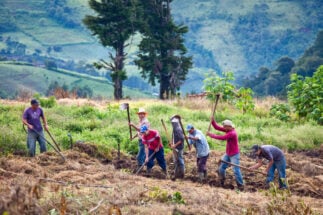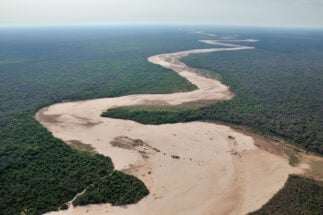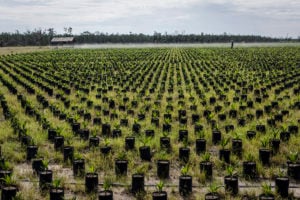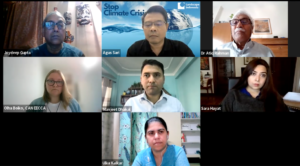The economic impacts of the Covid-19 crisis have been felt most deeply in low and lower middle-income countries, particularly those reliant on commodity exports, which suffered from the demand shocks brought on by lockdowns in rich countries and the global slowdown in trade.
As much as it has been a health crisis, the pandemic in the developing world has been an economic crisis for workers and a fiscal crisis for governments. The pandemic has become a critical juncture for sovereign debt issues, as fiscally strained governments face the triple challenge of financing a public health response, protecting the domestic economy and workers, and meeting external debt repayments.
Over 90 countries have approached the IMF for emergency assistance. Many others have sought debt relief through the G20 Debt Service Suspension Initiative (DSSI) and a few have sought debt restructuring through the G20 Common Framework for Debt Treatments beyond the DSSI.
Debt crises risk setting low-income countries back by many years, constraining the fiscal space of governments to address the effects of the pandemic, as well as to achieve longer-term prosperity and sustainability.
While borrowers and lenders both bear responsibility in ensuring debt sustainability, China’s role here is significant. As one of the largest bilateral lenders to the developing world, much of it under the Belt and Road Initiative (BRI), Chinese loans have contributed significantly to debt. China has participated in both multilateral G20 debt initiatives, but a lack of transparency around its lending has hindered negotiations for debt relief.
In countries that are climate vulnerable, governments face an additional bind: funding crucial measures for adaptation and resilience in years to come, while facing increasing pressures to mitigate emissions and preserve fragile ecosystems.
The pandemic has threatened to derail progress. However, climate change and debt relief may prove a rallying point and opportunity for coalition building and a new progressive agenda for a green recovery. Refinancing in new sectors, shaped by the changing patterns of trade and investment created by the pandemic, offer an opportunity to prioritise low-carbon, resilient and sustainable approaches to development.
China’s global development finance
Globally, Russia is the largest recipient of Chinese loans, while prominent BRI partners are also heavily represented, such as Pakistan, Laos, Sri Lanka, Turkmenistan and Kazakhstan. In Latin America, Chinese overseas development finance totalled US$137 billion from 2005 to 2019, according to estimates by the China-Latin America Finance Database from The Dialogue and Boston University’s GDP Center.
Many of the largest sovereign borrowers are resource exporters. In Latin America, US$62 billion went to oil-rich Venezuela alone. Argentina and Ecuador, both commodity exporters that are at different stages of negotiating sovereign debt restructurings with the IMF, have also been major recipients, borrowing US$17.1 and $18.4 billion, respectively.
26%
of China's overseas lending for new energy capacity in 2020 went to non-conventional renewables
Much of this lending is focused on infrastructure, particularly energy and transport: 67% of China’s total loan commitments went to the energy sector, which has historically favoured high carbon, greenhouse-gas-emitting industries like oil, coal and gas. Non-hydro renewable energy such as solar and wind saw far less investment, though this is shifting. In 2020, solar and wind financing accounted for 26% of total committed capacity, up from only 10% for the period 2010–2019. With the landmark pledge from President Xi Jinping in September 2021 to cease building coal power overseas, we may see an acceleration in renewable energy investment.
In recent forums, Beijing has sought to demonstrate its solidarity with developing countries. At last week’s virtual ministerial meeting of China and the 33-strong regional bloc the Community of Latin American and Caribbean States (CELAC), foreign minister Wang Yi said China is “willing to work with the CELAC side to boost the green transition of [the] economy… and provide developing countries with greater support in emissions reduction technology and capacity building”.
More concretely, at the recent Forum on China Africa Cooperation (FOCAC), China’s president pledged the reallocation to African nations of US$10 billion of its Special Drawing Rights (SDRs) – the IMF international reserve asset based on a basket of international currencies that since 2016 has included the Chinese RMB. The figure equates to a quarter of the total and outstripped shares offered by France and the UK (20%) and the US (18%), demonstrating a will to go further. China has been supportive of expanding allocations of SDRs since the beginning of the pandemic.
On debt relief, China’s approach has been more conservative. While there is an enduring myth around ‘debt-traps’, in reality, asset seizures are highly unlikely, but so is outright debt cancellation or the use of debt-for-equity swaps. Only zero-interest loans (ZILs) for 2020 and 2021 have been cancelled, which constitute a small fraction of total overseas lending.
Bilateral negotiations are the preferred channel, and Chinese banks have renegotiated a series of debt relief measures with individual countries. Mostly, this entails prolonging or deferring repayment. Its participation in multilateral initiatives in the G20 DSSI has also been limited. The China Development Bank (CDB), for example, is excluded from the initiative as a ‘commercial’ bank. However, CDB has also shown some flexibility, on more than one occasion granting grace periods on loan repayments to Ecuador and Venezuela, most recently in 2020 as their economies floundered amid the pandemic.
In a subset of countries where the proportion of debt repayments to China is high, China could play a key role, tying actions on debt to broader commitments to climate and sustainability.
Greening the BRI
There are clear synergies in China’s overseas development finance in supporting the climate agenda. Even before the pledge to halt overseas coal power, China had issued several documents providing guidance on greening overseas investments. In October 2020, five key ministries and regulators issued guidance to promote climate investment on the Belt and Road, including encouragements to “formulate and revise international standards on climate investment and financing”.
The document is not legally binding, but it set a new agenda for overseas investments, including encouraging financial institutions “to support the low carbon development of the Belt and Road and South–South cooperation” and suggesting China should “regulate offshore investment and financing activities” and manage climate risks.
Debt crises risk setting low-income countries back by many years, constraining the fiscal space of governments to address the effects of the pandemic
China’s global competitive advantage in renewable energy industries and its experience in their development at home gives it a clear opportunity in pioneering renewable energy expansion in developing countries for poverty reduction, and in ensuring a green transition. Chinese banks and enterprises can play an important role in this transformation.
Similarly, China could innovate in the area of finance: by pioneering approaches to sustainability-based debt relief schemes, for example, where indebted countries are incentivised to create binding targets on conservation, emissions reduction or fulfilment of their nationally determined contributions (NDCs) in exchange for debt relief. These not only alleviate the fiscal pressure of debt repayment – since by creating greater capacity for growth, they increase the likelihood of future debt obligations being fulfilled – but also generate long-term, stable streams of revenue for environmental projects, as they operate over the lifetime of a sovereign loan. This serves the interests of both borrower and creditor.
China’s position on debt swaps is unclear and it has not yet been trialled for any Chinese lending, but there is momentum building in this area. Ecuador, for example, announced a 60,000km2 reserve around the mega-biodiverse Galápagos Islands at COP26 climate talks. The marine park will be funded by a US$1 billion debt-for-nature swap, the largest in history, according to its government.
Scholars and policy experts from several institutions in the US and China have also championed debt-for-climate and debt-for-nature swaps to tackle the debt crisis caused by the pandemic. While questions over their effectiveness remain, in a limited set of countries where debt and climate interests directly intersect, these could have a significant potential impact. Borrower countries should explore this critical opportunity to link their debt and sustainability goals, and to push Chinese partners on promises for greater sustainable investment and capacity building.
More than a decade ago, Chinese trade and investment in carbon- and water-intensive commodities buoyed many developing country economies during the last global downturn. But momentum towards innovative, nature-friendly finance tools, and the kind of leadership showed by China in its SDRs share reallocation to developing countries, offer hope this time round of an economic recovery underpinned by greater environmental – and debt – sustainability.








